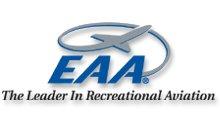After Four Years, Many Recommendations Made By EAA, Kitbuilders
Included In Final Document
 The FAA this week released the
long-awaited final order that revises the amateur-built aircraft
certification policy known as the 51 percent rule, as well as
Advisory Circular 20-27G, the guide for amateur builders on how to
properly certify every step of the building process.
The FAA this week released the
long-awaited final order that revises the amateur-built aircraft
certification policy known as the 51 percent rule, as well as
Advisory Circular 20-27G, the guide for amateur builders on how to
properly certify every step of the building process.
These documents are the result of a concerted effort led by the
EAA, homebuilders, the kitbuilding industry and other stakeholders.
The documents not only update and clarify the amateur-built
aircraft building process, they remove the fear many had of not
being able to build and fly their own aircraft.
"The new policy is very reflective of the thousands of comments
that were sent in by EAA members and amateur builders across the
board," said Joe Norris, EAA's homebuilders community manager. "We
feel that this new policy is not only a victory for EAA and
homebuilders, but also a victory for FAA because it gives them
better tools to enforce the regulation and make sure everyone is
working under the same set of rules."
 EAA President Tom Poberezny said he
is "extremely pleased" with the result. "It reinforces the
importance of the amateur-built aircraft program to the overall
aviation industry. It highlights the integrity of what has been
accomplished over the years in terms of the amateur-built program,
the development of kits, and overall safety," he said. "It's also
an example of collaboration between members of the amateur-built
community, EAA and government, specifically FAA."
EAA President Tom Poberezny said he
is "extremely pleased" with the result. "It reinforces the
importance of the amateur-built aircraft program to the overall
aviation industry. It highlights the integrity of what has been
accomplished over the years in terms of the amateur-built program,
the development of kits, and overall safety," he said. "It's also
an example of collaboration between members of the amateur-built
community, EAA and government, specifically FAA."
"The final result is in the best interest of the aviation
community too," Poberezny continued, "and promotes the opportunity
to design and build the airplane of your dreams."
The changes to the policy address:
- Standards used to evaluate aircraft kits.
- The level of builder participation.
- Professional builder assistance.
- A clearer definition of fabrication as it applies to the
building process.
The revised policy includes many of the recommendation proposed
by EAA, kit manufacturers, and builders who responded strongly to
the first policy drafts issued by the FAA in 2008. Those drafts
diverted from the initial recommendations of the Aviation
Rulemaking Committee (ARC), comprised of FAA and industry
representatives including EAA. In that proposed policy, the FAA
would have required builders to provide documentation that they had
complied with a three-part, percentage-based formula (known as
20-20-11) to ensure they had performed a majority of the "build"
work on their aircraft.

The FAA proposal also included a "fabrication" requirement that
was ill-defined and could have been hard to enforce. Additionally,
kits already available from manufacturers were in danger of having
to be modified to comply with the new percentage policy.
"If adopted, the FAA's proposal would have (had) a dampening
effect on participation in amateur-building activities," said Earl
Lawrence, EAA vice president of industry and regulatory affairs.
"That, in turn, would adversely affect kit manufacturers and
suppliers of engines, parts, equipment, and accessories. A
considerable segment of general aviation could have experienced a
downturn."
The response of EAA members and the amateur-built industry
compelled the FAA to assemble a second ARC in the fall of 2008 to
give further recommendations on a new policy. The just-released
policy includes:
- The privilege to build and fly almost any aircraft one can
dream-up.
- "Grandfathers" existing kits.
- Creates a uniform standard for new kits to be approved.
- Eliminates the proposed percentage-based build formula.
- Defines "fabrication".
- Provides clearer guidelines for builders who hire professionals
to assist with their project.
 ANN's Daily Aero-Linx (04.30.25)
ANN's Daily Aero-Linx (04.30.25) ANN FAQ: Turn On Post Notifications
ANN FAQ: Turn On Post Notifications Classic Aero-TV: Agile Aeros Jeff Greason--Disruptive Aerospace Innovations
Classic Aero-TV: Agile Aeros Jeff Greason--Disruptive Aerospace Innovations Aero-News: Quote of the Day (04.30.25)
Aero-News: Quote of the Day (04.30.25) ANN's Daily Aero-Term (04.30.25): Expedite
ANN's Daily Aero-Term (04.30.25): Expedite





